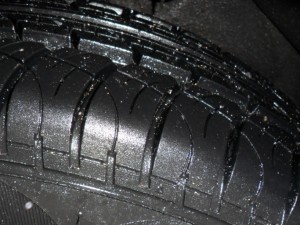 Hearing someone say, “you get what you pay for,” instantly brings to mind tires. Not just any tires, but the tires on our vehicles. When it comes time to replace a tire, or all of them, there seems to be this compulsion to buy close to the cheapest brand possible. You might as well be throwing darts at a dartboard blindfolded and hoping for the best.
Hearing someone say, “you get what you pay for,” instantly brings to mind tires. Not just any tires, but the tires on our vehicles. When it comes time to replace a tire, or all of them, there seems to be this compulsion to buy close to the cheapest brand possible. You might as well be throwing darts at a dartboard blindfolded and hoping for the best.
Before going and buying the cheapest set you can find, there are a few things you need to consider.
Determine When You Need New Tires
Tires aren’t meant to last forever, obviously, but there does come a specific point in the life of a tire when it needs to be replaced. Once the tread in your tires fall to just 2/32 inch minimum tread depth they are considered completely worn out. If you drive in wet conditions tires are considered worn out at 4/32 inch, and in snow its 6/32 inch. If your tires are showing this type of wear in the given conditions, you are at serious risk of a blowout and being involved in an accident.
Figure Out Tire Size
Most of us assume that whatever size tire comes with your vehicle when you buy it are the best ones for it. That’s not always true because changing the tire size can actually lead to increased performance, better gas mileage, and a more enjoyable driving experience. You could keep the same size tires each time you need new ones, but consider going up a size can improve traction, how much weight your vehicle can handle, and response times and handling when driving.
Be Aware of Your Driving Conditions
If you live in the mountains of Colorado, you wouldn’t want tires meant for a vehicle driving in a dry and hot climate like Texas. You’d miss out on the handling and traction you would need to safely go from Point A to Point B. There are All-Season tires available on the market, which are generally fine for anyone who finds themselves mostly sticking to the roads of Texas. Information like this is good to know in case someone tries to sell you snow tires during a Texas summer.


![[Facebook]](https://www.lewisvillevw.com/blogs/1098/wp-content/plugins/bookmarkify/facebook.png)
![[LinkedIn]](https://www.lewisvillevw.com/blogs/1098/wp-content/plugins/bookmarkify/linkedin.png)
![[Twitter]](https://www.lewisvillevw.com/blogs/1098/wp-content/plugins/bookmarkify/twitter.png)
![[Yahoo!]](https://www.lewisvillevw.com/blogs/1098/wp-content/plugins/bookmarkify/yahoo.png)
![[Email]](https://www.lewisvillevw.com/blogs/1098/wp-content/plugins/bookmarkify/email.png)


